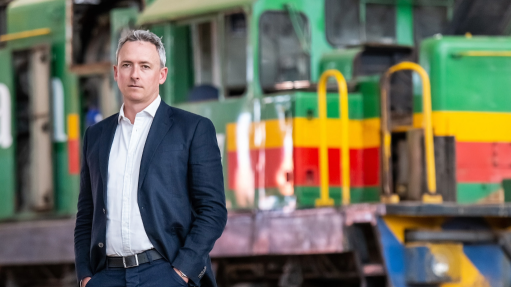Speakers outline opportunities for PGMs in the hydrogen market
Hydrogen could play a key role in addressing South Africa’s pressing energy challenges and platinum group metals (PGM) will have a pivotal role to play in the hydrogen economy, as the metals are a catalyst in many of the processes in the value chain.
It is also critical for the country to act now to undertake projects and build up component manufacturing capacity so that this is in place when demand increases.
These were some of the key messages from the ‘To what extent is green hydrogen a new demand driver for PGMs’ session, during the 2024 Hydrogen Economy Discussion event, held in Johannesburg last week.
Heraeus Precious Metals Hydrogen Systems VP Dr Phillip Walter emphasised that PGMs were indispensable for many (often catalytic) applications in the hydrogen market.
He explained that one of the most prominent applications for PGMs was proton exchange membrane (PEM) electrolyser catalysts.
PGMs are also found on bipolar appliances and also play a role in hydrogen purification, he said.
Also, ammonia can be synthethised or split using ruthenium-based catalysts, Walter said, adding that fuel cells also used platinum-based catalysts.
He said hydrogen, therefore, represented a considerable opportunity for PGMs; however, this required efforts to capitalise on this.
He pointed out that while there had been announcements about proposed projects, these needed to move from concept to implementation.
Zeroing in on electrolysers, EY South Africa strategy and transactions partner James Brice referenced research by the company’s green hydrogen hub in Germany, which projects an about 50% drop in electrolyser capital expenditure (capex) during 2030 to 2050.
This anticipated drop was largely based on automation, economies of scale and rising module sizes, he pointed out.
The company’s view is that the reduction in electrolyser capex will not be as aggressive as experienced for other technologies, such as solar and wind energy.
Brice informed that there were five key risks – underpinned by investment, raw materials access and skills – that were posing challenges to green hydrogen, and, in turn, electrolyser development.
These are technological, supply chain, capabilities, revenue certainty and regulatory risks.
For the supply chain risk, a proposed solution is diversifying these so as not to be dependent on one country, as well as innovation to reduce critical mineral content.
FUEL CELL OPPORTUNITY
Johnson Matthey PGM advocacy manager Margery Ryan averred that the demand potential for hydrogen was in fuel cells, positing that this presented the greatest opportunity for PGMs.
However, currently, the green hydrogen space was moving faster, albeit with delays, than the fuel cell vehicles side of things, she pointed out.
Ryan said that, while the burgeoning demand in green hydrogen was good, more needed to be done in terms of fuel cells.
She emphasised the need for South Africa to start investing in supply chain preparedness and recycling technology for this.
However, this needed to be underpinned by more market growth to support this, she emphasised. “Companies are committed, and investing, but they cannot keep doing this if the market is not growing.”
Isondo Precious Metals CEO Vinay Somera reiterated Ryan’s point that hydrogen demand was growing, and stressed that component manufacturing needed to keep pace.
He highlighted that, for South Africa, the best opportunity in terms of green hydrogen was in new PGM demand, with this offering the complementary ability to reindustrialise the country’s economy.
He emphasised that what was required were “projects on the ground”, with this posited as the quickest way to capitalise on the opportunity.
He emphasised that intermediate projects were critical, and then building up to bigger projects. Without this, there would not be enough component capacity when the demand for hydrogen materialised, Somera said, warning that this was the “quickest way to kill the industry”.
Somera acclaimed that Isondo had been developing capacity, having establishing an industrial scale, high-tech fuel cell and electrolyser component manufacturing facility in Johannesburg, for which a ribbon cutting was held recently.
The plant is designed to manufacture, at an industrial scale, PGM-containing membrane electrode assemblies for the global and local automotive, aeromotive, stationary power and hydrogen generation technology supply chains.
Also, Isondo will develop and manufacture the PGM-containing catalyst using a custom-made manufacturing plant.
The company expects to have the facility ready for use by August, and is forecasting a six-month period from then to have everything running smoothly and conducting the necessary testing and tweaks. The first products were therefore anticipated to be available commercially by mid-2025, Somera informed.
Somera highlighted that the company had already started the recruitment process, bringing on board young graduates to work at the facility, which he stressed was important, given that it showcased the real opportunity of job growth in the industry.
Somera also pointed out that there was an opportunity to localise demand in the region, with Southern Africa poised to present an area for hydrogen demand in the future.
He said this could be combined with the potential manufacturing capacity of changing the internal combustion engine to fuel cell manufacturing.
Article Enquiry
Email Article
Save Article
Feedback
To advertise email advertising@creamermedia.co.za or click here
Comments
Press Office
Announcements
What's On
Subscribe to improve your user experience...
Option 1 (equivalent of R125 a month):
Receive a weekly copy of Creamer Media's Engineering News & Mining Weekly magazine
(print copy for those in South Africa and e-magazine for those outside of South Africa)
Receive daily email newsletters
Access to full search results
Access archive of magazine back copies
Access to Projects in Progress
Access to ONE Research Report of your choice in PDF format
Option 2 (equivalent of R375 a month):
All benefits from Option 1
PLUS
Access to Creamer Media's Research Channel Africa for ALL Research Reports, in PDF format, on various industrial and mining sectors
including Electricity; Water; Energy Transition; Hydrogen; Roads, Rail and Ports; Coal; Gold; Platinum; Battery Metals; etc.
Already a subscriber?
Forgotten your password?
Receive weekly copy of Creamer Media's Engineering News & Mining Weekly magazine (print copy for those in South Africa and e-magazine for those outside of South Africa)
➕
Recieve daily email newsletters
➕
Access to full search results
➕
Access archive of magazine back copies
➕
Access to Projects in Progress
➕
Access to ONE Research Report of your choice in PDF format
RESEARCH CHANNEL AFRICA
R4500 (equivalent of R375 a month)
SUBSCRIBEAll benefits from Option 1
➕
Access to Creamer Media's Research Channel Africa for ALL Research Reports on various industrial and mining sectors, in PDF format, including on:
Electricity
➕
Water
➕
Energy Transition
➕
Hydrogen
➕
Roads, Rail and Ports
➕
Coal
➕
Gold
➕
Platinum
➕
Battery Metals
➕
etc.
Receive all benefits from Option 1 or Option 2 delivered to numerous people at your company
➕
Multiple User names and Passwords for simultaneous log-ins
➕
Intranet integration access to all in your organisation


















